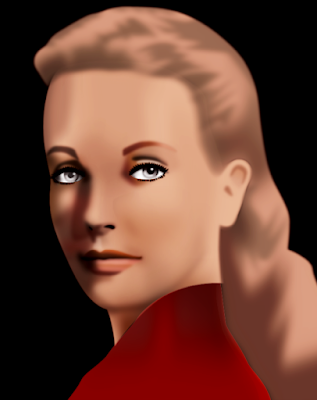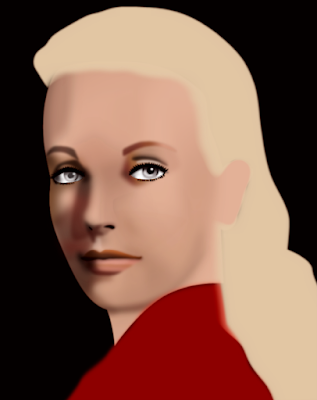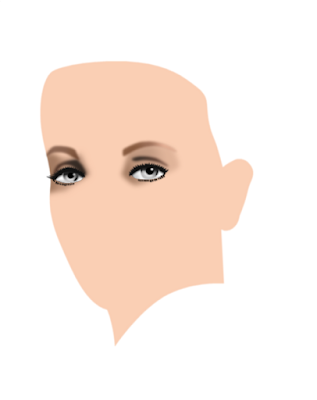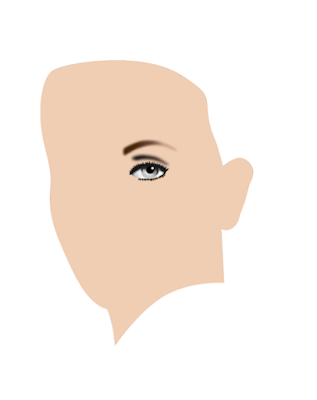Today I began configuring a Minisforum mini PC with a Ryzen 9 CPU, a dedicated GPU and 64 GB RAM, which should run very fast. However Windows 11 Pro was pre-installed on the rig and it is incredibly slow, has a lot of trouble accessing plugged in USB drives and hangs too often; user complaints are flooding the web about these problems. Windows 10 on my previous very old computer (from 2004....) was much, much faster. The Minisforum 64GB RAM machine that I ordered, by the way, came without the RX6600M GPU drivers installed, which forced the machine to use Microsoft's generic driver that was unable to recognize multiple screens, apart from having a less than a snail's pace. This is strange, because if Minisforum equips its HX90G mini PC with a dedicated GPU, one would expect the driver for that graphic card to be installed. It feels rather weird to advertise / boast that the machine has a dedicated GPU, while not bothering to install its driver.
Anyway, that was strange, but an easy fix. I understand that Minisforum thought it was a good idea to pre-install Windows 11 Pro, because that would save buyers the trouble to perform an upgrade themselves, but I guess only few would have thought that MS new platform would be so mind bendingly slow, before having tried it out themselves. Also, I hope that Minisforum has tested Windows 11 before installing it on their product.... Windows 11 has been around for some time now, but Microsoft has not yet fixed its problems that are of a magnitude that simply can not be ignored, particularly the inaccessibility of USB drives is a major fuck up (pardon my French). Users all over the web have franticly been trying to find all sorts of workarounds, none of which work. If you do a Google search in an attempt to resolve the problem, Google says it found close to 17 million websites that offer solutions (of which only a fraction are presented of course), but you will soon get frustrated trying the suggestions, because you are going to find out that they do not work. Also Microsoft's Disk Management and fixing drive errors do not improve its file explorer woes at all, even after the system indicates that scanning and fixing the connected drive is necessary. All sorts of weird messages keep popping up after 'fixing' the problem, leaving the users with the same set of problems as they had before attempting to apply numerous very time consuming fixes or search for non-existing solutions. Apart from Microsoft, Intel and AMD haven't sped up the platform's speed either. In this day and age of incredibly fast developing AI, it apparently is a problem to let the world's most used platform run at a proper speed, even after installing updates that promise improvement.
 |
| When Windows can't find something, it does not exist. |
I would recommend those, that make a living with programs that run on their computer, to stick with Windows 10, particularly those that think they are forced to buy a new, expensive and more powerful computer to even get Windows 11 running. Windows users must hope that by the time Windows 10 support has come to an end that Microsoft will have repaired the current (December 2022) Windows 11 problems, because in its current state it is pretty much useless, to be honest. The only thing that I noticed is improved, is the stability of Bluetooth that does not drop the connection with devices every few minutes, like it did in Windows 10. But that is by far not enough to upgrade a Windows 11 system. It leaves Windows 11 users to wonder how long it will take Microsoft to sort out the problems or simply return to good old Windows 10.
Update December 23 2022
After exhaustingly having tried all suggestions presented on the web without luck, I ordered a 10 port USB 3 hub to connect the external drives, most of which were USB 3 drives. It raised the performance significantly and Windows 11 Actually recognized all disks instantly. This means that most of the problems mentioned in this article are related to deficient USB 2 hubs (which I used before) and drives, that are either not recognized by Windows 11 or fastidiously slow. I am still not convinced that Windows 11 outpaces Windows 10, but at least using the USB 3 hub resulted in a significant improvement. So, those troubled by Windows 11 not finding external USB drives, very slow opening of such drives, snail's pace editing of files or even hangs and crashes, make sure external drives are connected to USB 3, either directly to the computer or through a USB 3 hub.
 |
| € 77,99 10 port, externally powered USB 3 hub |
It remains odd though that Microsoft did not bother to make Windows 11 backward compatible. On the other hand that company demands hardware systems to meet requirements that force many of its users to upgrade their computer, find workarounds or even buy a new machine to be able to install Windows 11. In doing so, backward compatibility is thrown out of the Windows. Years earlier the world should have seen the obvious consequence of this policy coming when Microsoft fired most of its test engineers, that did the testing before a new upgrade or version was released and created the perfidious 'Insider Program', thereby basically making their clients the testers a.k.a. guineapigs, which probably boosted Microsoft's revenues, and let (would be) nerds do the testing for free, while giving those suckers the impression that they belong to some sort of 'elite'. They're the chosen ones alright - the chosen idiots. This type of crooked policy causes the rest of Windows users to wait longer for updates that contain more bugs. However, as long as Microsoft gets away with such tricks, it's no skin of their nose.
 |
| € 1200 64GB RAM Minisforum HX90Gwith a dedicated graphics card |
In the case of Windows 11 Microsoft has decided to enforce the purchase of new hardware on users in order to be able to run the new system - TPM, UEFI, secure boot and new versions of USB as concluded in this blog entry. It is a deal between corporations in the computing industry, just like when Apple banned Flash, that was used a lot in advertisements. Allegedly for security reasons, but Flash' replacement HTTP5 ads are much more difficult to block with native browser software and extensions, because it is built of the same type of code as that used to create websites, which is why the internet world of today is flooded with a horrendous load of obtrusive ads and annoying pop ups, that can't be blocked. So, I suspect that Microsoft will not be in a big hurry to fix the USB problem of Windows 11 any time soon. They will first have to reach the target on which the corporate cartel agreed, before they will be allowed to present a solution to the problem. This of course is all speculation from the far end of the twig to which I will nevertheless stick until Microsoft does what it is legally supposed to do, which is offering properly working products to paying customers. If that makes you feel like a bug tester for Microsoft, you probably are not far off the mark. Since the company ditched its department of professional testers, it has invented the 'Insider Program', which delegates the testing to the people that bought their platform. Such a measure probably is a good boost for Microsoft's profits, but for its users it's not so good, like outsourcing integral parts of an organization rarely is a good idea. Except for the bean counters of the company.
Update December 25 2022
The swansong about my of Windows 11 experience goes on. Watching a live performance of the brilliant band Cake, it came to mind that it would be a good idea to install an equalizer and I ran into a site that suggested the Realtek driver, which I had used before in Windows 10 without a problem. Big mistake on Windows 11. After installing the program it said the driver would not be active until I restarted my computer. After doing so my main monitor had disappeared. Looking in the Device Manager all of a sudden the driver of my GPU reported a problem. I uninstalled the driver and searched for new hardware, which the computer was unable to find. After uninstalling the Realtek driver, I was once again asked to restart the machine. And after the restart my main monitor had magically reappeared. That hints at the fact that the installation of the Realtek driver messed up the driver of my AMD Radeon RX 6600M and the TranslucentTB program that allows to fiddle with the appearance of the Taskbar. Now this can probably not be entirely blamed to Windows 11, but the system gave no clues whatsoever of what was going on and how to correct the mistake. I guess if future civilizations 10,000 years from now dig up computer hardware and software of today, they will place this age along with the stone age. So, Windows 11 users, whatever you do, DO NOT install the Realtek equalizer driver.
Update Sept 16 2023
And what do you know, years after the release of Windows 11 Microsoft is getting 'serious' about File Explorer sluggishness, freezes and crashes. The company should really be given a standing ovation for such an amazingly swift and professional response and, who knows, the promised improvement might even work this time. The bug has been known for years - Windows 11 runs SSD's at half their speed - but after such a long time, it just seems that Microsoft simply never bothered to do anything whatsoever about this utterly annoying problem. It makes users wonder: What on earth happened in the Microsoft developer department - did someone actually wake up? Or did they decide to tell their all powerful AI to solve an important issue instead of wasting its mind boggling prowess on useless trivia and unnecessary functions, that paled users' endlessly repeated request to please get rid of the damn bug. Developments of Microsoft's File Explorer debugging get more weird by the day: Some Reddit users say that pressing F11 to enter full screen in File Explorer and the pressing F11 again speeds up File Explorer performance multiple times while working in File Explorer, which may indicate that Microsofte really has no clue what can actually be done to cure the bug. Such unobvious 'workarounds' randomly discovered by imaginative users should not be necessary to improve Microsoft's lack of attention for fundamental functions of their platform. By the way, the improvement by using this trick is really marginal I found after trying it out, indicating that Microsoft has not yet solved the problem.
Run ViVeTool that is available on Github to get File Explorer with tabs, which is a feature that many users have been asking for for years without success. An other annoying bug is that users can set speakers or headphones as default sound source as often as they want, Windows 11 keeps going back to settings users do not want or get no sound at all, until they define their preferred sound setting after putting their machine to sleep, restarting or shutting down. With all the prowess of the assistance of AI, it should not be too difficult to get rid of this bug, but it still exists. Don't bother to find help in the shipload of 'solutions' that are presented on forums all over the web - none of them work. It saves wasting a ton of time that could be spent more useful and it prevents a lot of frustration.
Update October 19 2023
According to the Tom's hardware website, the slowness of Windows 11 file management is caused by the fact that the platform has Software Bitlocker encryption enabled. It slows down the speed of SSD's by up to 45 percent (!!!) and forces the CPU to decrypt and encrypt data each time data is retrieved or stored locally. This is a problem of Windows 11 Pro specifically, Windows 11 Home edition does not support Bitlocker, which is why it does not have the slowness problem. Running the Command Prompts as an Administrator 'manage-bde -status' without the parenthesis, should show if your disks are encrypted or not. I ran this command and none of my disks were encrypted, but still the platform runs slow. Perhaps you have better luck than I do. The Samsung SSD's (the ones I use, unfortunately) seem to suffer the most from this. Other brands that do not use software Bitlocker do slightly less worse. The point is that Microsoft should work harder on this annoying matter and make all brands of SSD's run as fast as their producers claim they can run. The company has forced degraded SSD performance for Windows 11 Pro users. To disable Bitlocker Encryption run 'manage-bde off C:' in the Command Prompt as an Administrator for every drive that is connected to you system. In my case the Encryption was already off, so I continue to suffer from slow SSD performance until Microsoft comes up with a solution that actually works. Towards the end a solution is presented on aforementioned website (in the link in this paragraph) , which is an entirely fresh install of Windows 11 Pro and all the programs you have installed, after copying all the data of your disks before the installation and restoring them afterwards (....), which I do not have the time to do. Microsoft perhaps could have prevented this sad situation if it had not fired its entire professional testing department. But they did kick the team out and as a result haven't yet repaired the problem.
Apparently I'm not the only one pissed off by Window 11's utterly frustrating sluggishness, like savvy former Window's employees. Updates (supposedly) fix all sorts of bugs and bring a ton of additional features, but the platform's fundamental problem of horrifically slow file management remains unaddressed. Third party alternatives like Files Explorer aren't a solution either, which means users will have to put up with this utterly annoying bug until Microsoft issues a proper fix that has been galling the crap out of users for years in a row (as per May 22 2024). Therefore it is no wonder that the user base of Windows 11 is increasing at a crippled snail's pace, just like its file management, because Windows 11 basically is slower than my grandmother wrestling uphill during a landslide. Working with the platform is as slow as my previous first generation i7 rig from just after the turn of the century.



































